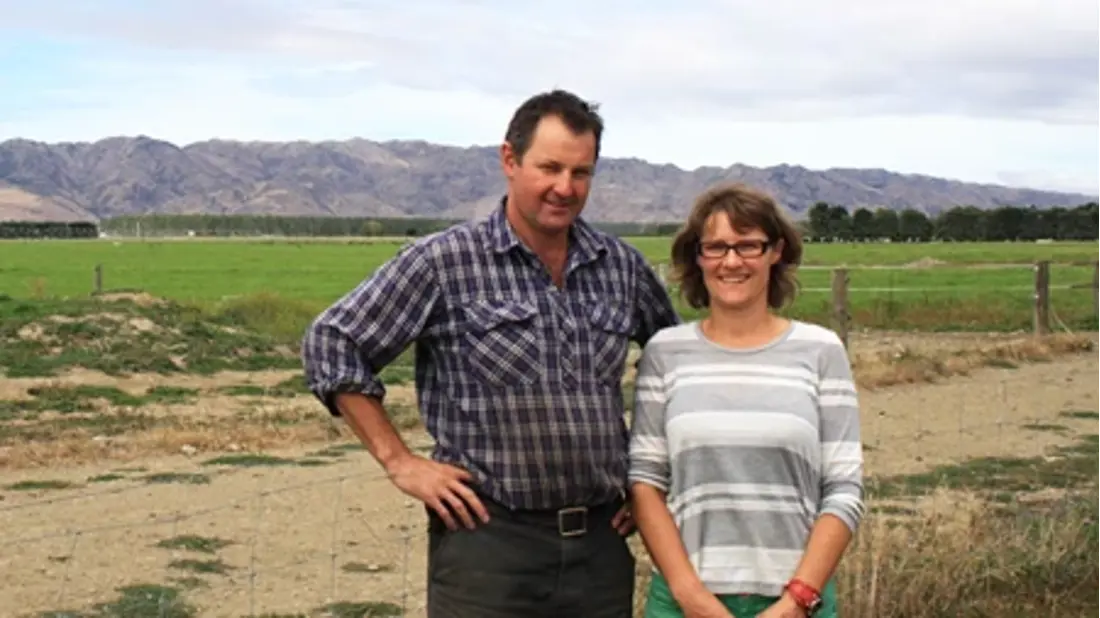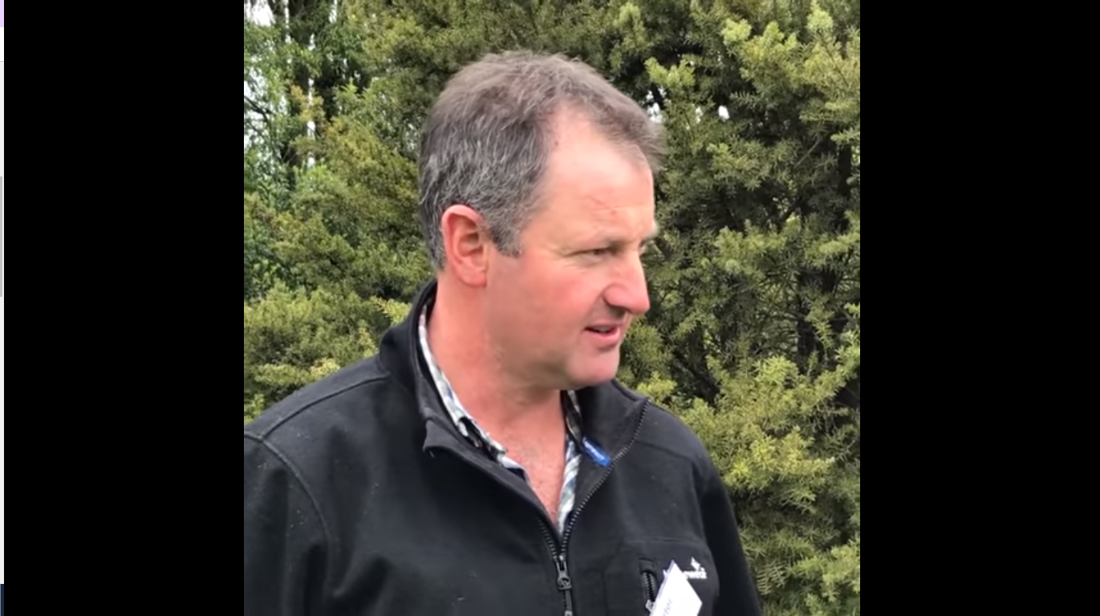Forages for Reduced Nitrate Leaching, Peter and Joc Kinney (Culverden)
4 min read
Peter and Joc Kinney dairy farm near Culverden on a 310 ha milking platform. They're part of the FRNL programme, which has influenced them to make certain farming changes like including plantain in some paddocks and providing low-N food in autumn. Their farm is unique because it doesn't need to reduce nitrogen leaching. But in the 2018/19 season, they noticed an increase in estimated N leaching due to increased fertiliser use and stock numbers. The Kinneys believe a low-cost pastoral system is the future for NZ farming, offering a sustainable way forward.
Peter and Joc Kinney are dairy farming near Culverden.
The dairy farm has an effective milking platform area of 310 ha. At the start of the FRNL programme this was 95% irrigated, at a stocking rate of 3.8 cows/ha. The farm has a 199 ha support block providing winter grazing and lucerne, barley, peas, and pasture are grown.

The farm is in the Amuri Irrigation Scheme in the Hurunui catchment and does not need to reduce nitrogen (N) leaching.
Since being involved in the FRNL programme, the Kinneys have:
Purchased N surplus and N leaching was relatively static for the first four seasons, compared to the other monitor farms. In 2018/19 the purchased N surplus increased as a result of increased N fertiliser use and imported supplements. A lot of this was used in autumn to feed some extra stock (culls and carry-overs) that was kept on the platform to milk for longer. This along with the increase in stock numbers would have contributed to the increase in estimated N leaching for the 2018/19 season.
Area:
310 ha effective milking platform
Dominant soil:
Balmoral stony silty loam, Pahau silty loam, Culverden silty loam
Average rainfall:
approx. 530 mm
Supplements fed:
3-5 t DM/ha, including lifted fodder beet
Cow numbers:
1154-1198 peak milked
Production:
1705-1904 kg MS/ha, 458-493 kg MS/cow
Support block:
220 ha (growing fodder beet, kale, lucerne, maize and pasture)
Pasture harvested:
14.5-16.1 t DM/ha
Trading:
Ballindalloch Farm Limited
“I joined the programme to help the dairy industry and other farming systems moving forward.”
“The programme helped us analyse our system and helped us benchmark against other farms.”
"We think it is important because we believe in our low cost pastoral system is the future for NZ farming."
“Farmers and the industry will benefit as this will provide robust on-farm information to guide the industry forward with the challenges of nutrients and irrigation.”
Peter Kinney talks about his winter grazed crops and what he’s considering before putting in catch crops

2015/16
Reduced imported supplement, fed lifted fodder beet from support block on the milking platform in autumn and spring.
The farm system for the 2015/16 season was similar to the 2014/15 season. Changes made were:
This resulted in similar milk production, a decrease in the purchased N surplus from 232 to 223 kg N/ha (4% less), but a 7% increase in estimated N leaching. This could have been due to higher N content in the diet, and therefore higher estimated N excreted in urine.
2016/17
Increased imported supplement, continued to feed lifted fodder beet, and fed maize silage from support block.
The farm system for the 2016/17 season was similar to the 2014/15 season. Changes made were:
The farm continued to use lifted fodder beet from the support block in autumn and spring (total of 150 t DM imported).
Milk production was only slightly higher (+2%) with less pasture eaten. Purchased N surplus increased to 248 kg N/ha (+11%) and estimated N leaching increased from 46 to 50 kg N/ha (+9%).
2017/18
Continued to feed lifted fodder beet and maize, and established plantain as part of a mixed sward.
The farm system in 2017/18 was again similar to previous years. Changes include:
Lifted fodder beet from the support block continued to be used on the milking platform in autumn and spring for low-N feed. Maize silage was also used. The maize grown on the support block followed the lifted fodder beet.
Less N was imported with fertiliser and supplement; stock numbers and milk production were slightly lower. This resulted in a lower purchased N surplus (10% less than the previous year) and lower estimated N leaching (8% less).
2018/19
Increased imported supplement, increased N fertiliser use, continued to establish plantain as part of a mixed sward, and included tall fescue with the plantain mix.
The farm system in 2018/19 was similar to previous years:
The farm continued to bring in lifted fodder beet and maize silage from the support block onto the milking platform.
Plantain continued to be established as part of a mixture. In one paddock this was sown with a tetraploid ryegrass, and in the other with tall fescue.
The increase in N fertiliser and supplement use and milking on more cows in autumn resulted in higher annual milk production (+12%), compared with the previous season. This was associated with an increase in purchased N surplus (+33%) and N leaching (+28%).
These results clearly illustrate that responding to weather by using external inputs and reduced culling to maintain milk production can have big consequences for N surplus of the farm and estimated N leaching. When limits are in place, decisions around inputs and cow numbers need to be evaluated throughout the season to ensure the end-of-year results comply with consent conditions.
Now’s the perfect time to check in, plan, and set up for a strong season. We’ve pulled together smart tips and tools to help you stay ahead all winter long.
Whether you prefer to read, listen, or download handy guides, we’ve got you covered with trusted tools to support your journey every step of the way.
Put our proven strategies and seasonal tools to work. Boost production, support animal health and watch your profits hum.
Tools that are backed by science, shaped by farmers and made for this season.
That’s Summer Smarts.